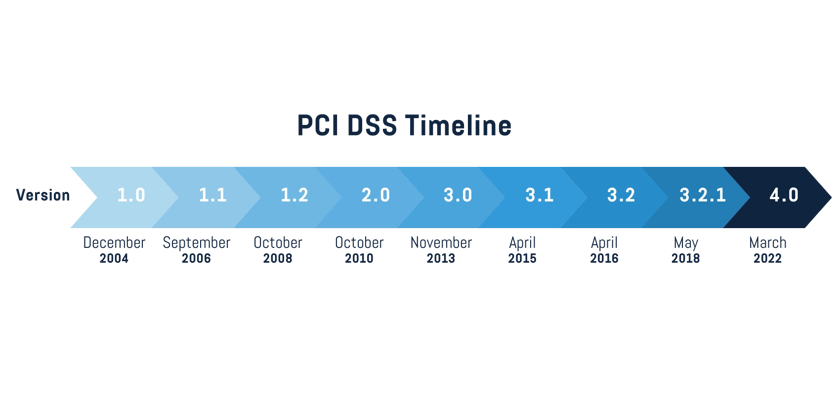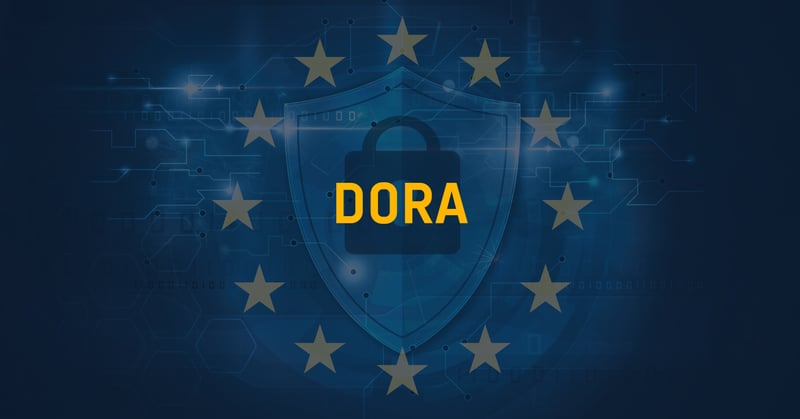What is PCI DSS?
PCI DSS, or Payment Card Industry Data Security Standard, is a globally recognized security standard designed to fortify card data security. This standard applies to all businesses that store, process, and transmit cardholder data—comprised of 12 requirements, broken down into 250 controls. PCI compliance means that your company adheres to the requirements of PCI DSS.
The 12 PCI DSS requirements for compliance
- Install and maintain a firewall configuration to protect cardholder data
- Do not use vendor-supplied defaults for system passwords and other security parameters
- Protect stored cardholder data
- Encrypt transmission of cardholder data across open, public networks
- Protect all systems against malware and regularly update antivirus software or programs
- Develop and maintain secure systems and applications
- Restrict access to cardholder data by business need-to-know
- Identify and authenticate access to system components
- Restrict physical access to cardholder data
- Track and monitor all access to network resources and cardholder data
- Regularly test security systems and processes
- Maintain a policy that addresses information security for all personnel
What's new in v4.0?
The new PCI standard is set to introduce several significant improvements, aimed at enhancing security and providing comprehensive support for organizations. These enhancements include:
Strengthened security
The standard will require advanced multifactor authentication and updated password specifications to bolster security measures. Additionally, it will address the emerging threat of phishing and other security breaches, ensuring organizations have robust defenses in place.
Enhanced guidance
The new standard will offer updated guidance on implementing security controls. It will provide detailed procedures for identifying areas that require improvement, offering valuable insights to auditors and program assessors. Furthermore, it will outline specific roles and responsibilities for each updated requirement, promoting clarity and accountability.
Flexible security implementation
The standard will support various methods of security implementation. It will establish procedures for conducting risk analyses to improve overall security activities. Moreover, it will accommodate different types of accounts, such as shared and group accounts, while also providing increased options for evaluating newer and more innovative security processes.
Streamlined compliance activities
The standard will introduce enhancements to compliance activities, addressing the range of actions an organization may undertake to demonstrate compliance. This includes completing a comprehensive Report on Compliance, engaging in self-assessment questionnaires, and providing attestation of compliance, thereby facilitating a streamlined compliance process.
Heightened focus on cyber security
The new standard will place a greater emphasis on cyber security activities. Specifically, it will pay increased attention to encryption and network security to safeguard customer credit card data during transmission. This proactive approach will ensure the highest level of protection for sensitive information.
Increased frequency of security controls testing
Organizations will be required to establish a program of regular testing for their security controls to verify compliance with the v4.0 requirements. This heightened focus on testing will promote continuous monitoring and ensure that security measures remain effective and up to date.
Overall, the forthcoming PCI standard represents a significant step forward in enhancing security measures, providing comprehensive guidance, accommodating diverse implementation approaches, streamlining compliance activities, prioritizing cyber security, and enforcing regular testing of security controls.

View of PCI DSS Version Timeline.
Steps to take to prepare for PCI DSS v4.0
Familiarize yourself with the updated requirements
Take the time to thoroughly review and understand the updated requirements in version 4.0. Identify the key criteria essential for achieving compliance under the new standard.
Conduct a gap analysis
Compare your existing policies, procedures, and security-related activities against the requirements of v4.0. Identify areas where updates and modifications are necessary to align with the new standard.
Establish a dedicated team
Form a team responsible for updating security activities, specifically focusing on policies, procedures, technologies, and staff expertise required to comply with v4.0. Assign clear responsibilities and provide the necessary resources to support the team's efforts.
Data cleanup
Remove all unnecessary data from affected systems, especially sensitive data, to minimize the risk of damage or data theft. Adhere to proper data disposal practices and ensure compliance with data protection regulations.
Strengthen system security
Implement robust measures to secure relevant systems from unauthorized access by threat actors. This includes regularly updating and patching systems, employing strong access controls, and monitoring for suspicious activities.
Assess network perimeter
Conduct a thorough examination of your network perimeter to identify potential threats and vulnerabilities that could lead to breaches. Implement appropriate safeguards to mitigate risks and enhance network security.
Maintain ongoing vigilance
Implement a system of continuous monitoring and documentation of security activities. Regularly review and assess security controls, perform security audits, and maintain comprehensive records of security-related activities.
Review cardholder data security protocols
Review and update protocols related to the security levels of cardholder data. Ensure that appropriate safeguards are in place to protect the confidentiality, integrity, and availability of cardholder data.
Regularly test and update security measures
Verify that all data security activities are regularly tested and updated as needed. Document the results of these tests and use them as evidence of performance during audits.
Keep senior management informed
Regularly brief senior management on the work being performed by the security team to ensure compliance with v4.0. Provide updates on progress, challenges, and any necessary actions to maintain alignment with the new standard.

Timeline of PCI DSS v4.0.
Overcoming hurdles & avoiding mistakes along the compliance journey
What happens if you don't comply with PCI DSS v4.0?
Organizations that fail to meet the requirements of PCI DSS v4.0 by the deadline may face financial consequences. The Council has a fine structure that increases based on the number of months an organization is out of compliance.
Non-compliance with PCI DSS v4.0 can also be a warning sign of uncorrected vulnerabilities and increased risk, which can impact everyone involved in the payment chain, especially consumers. In addition to fines, non-compliant merchants risk losing essential contracts needed to continue accepting card payments. Similarly, merchant service providers may lose important business relationships if they fail to comply with PCI v4.0.
Conclusion
You’ve made it this far in the blog. You already know of the importance of PCI DSS Compliance. Not only does it help prevent cybercriminals from accessing sensitive information and causing data breaches, it also demonstrates your dedication to protecting your customers' personal data. This builds trust and credibility with your customers, greatly benefiting your business.
As a certified platform for ASV, we offer PCI DSS scanning following the PCI SCC (Payment Card Industry Security Standards Council). Let's work together to prioritize your PCI compliance and keep your customers' transactional information safe.








